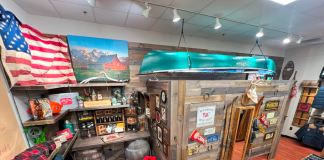November retail sales were up 0.7 percent seasonally adjusted from October and increased 5 percent unadjusted year-over-year, completing the first half of the holiday shopping season with spending on track to meet the National Retail Federation’s forecast, NRF said today. The numbers exclude automobiles, gasoline stations and restaurants.
“Consumers have the capacity and confidence to spend this holiday season,” NRF Chief Economist Jack Kleinhenz said, citing the influence of stronger employment, improved wages, tax cuts and increased net worth. “This is a good start to the holiday season and consistent with our outlook. Consumer spending remains solid and clearly provides evidence that the economy is healthy as we head into 2019.”
NRF’s forecast predicts that holiday retail sales during November and December will increase between 4.3 and 4.8 percent over the same period in 2017 for a total between $717.45 billion and $720.89 billion.
As of November, the three-month moving average was up 4.3 percent over the same period a year ago. The November results build on improvement seen in October, which was up the same 0.7 percent monthly and 5.6 percent year-over-year.
The bad news is, while clothing and clothing accessory stores sales were up 4.1 percent year-over-year, sporting goods stores were down 7.8 percent year-over-year but up 0.4 percent month-over-month seasonally adjusted.
NRF’s numbers are based on data from the U.S. Census Bureau, which said today that overall November sales – including automobiles, gasoline and restaurants – were up 0.2 percent seasonally adjusted from October and up 4.2 percent unadjusted year-over-year.
In related news, retail industry employment in November increased by 18,600 jobs seasonally adjusted from October, accounting for 12 percent of the 155,000-job increase reported by the Labor Department for the economy overall, the National Retail Federation said. Year-over-year, retail employment was down by 16,300 jobs unadjusted as a tight labor market made it difficult to fill positions. Again, the retail numbers exclude automobile dealers, gasoline stations and restaurants.







